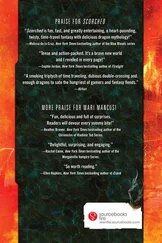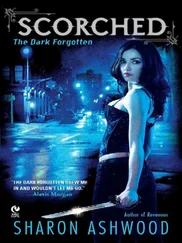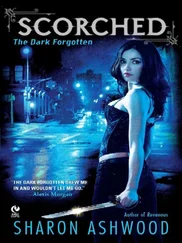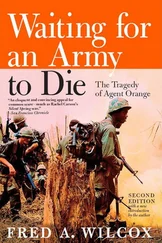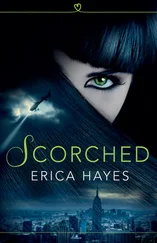In addition to destroying food crops, the military wants to intensify its efforts to:
Reduce infiltration of NVA forces into SVN through Laos during the dry season…. One promising technique is to contaminate certain selected interdiction points with riot control agent CS. This agent has been approved for use in SVN and has been employed successfully in support of tactical operations….
Riot control agents produce temporary irritating or disabling physiological effects when in contact with the eyes or when inhaled. Riot control agents used in field concentrations do not permanently injure personnel. Complete recovery from agent effects is spontaneous when the individual moves to a clear atmosphere. 13
The use of passive voice, “This agent has been approved for use in SVN,” is interesting. It is apparently okay for the military to use toxic gases against the enemy in Vietnam because someone, somewhere, approves of this tactic. Like herbicides, CS gas does not harm human beings. It might cause temporary “irritating or disabling” effects, but once individuals move to “a clear atmosphere” they will be fine.
Between October 1966 and April 1967, the military devises a new technique for destroying Vietnam’s environment. It will send squadrons of B-52S over the defoliated jungle to firebomb “free strike targets” and square “target boxes” approximately seven kilometers on each side. Pilots will first saturate the jungle with Agent Orange, after which ground crews will make sure that the forest is dry enough to be ignited by incendiary bombs.
The director of defense research and engineering asks the Forest Service and the US Department of Agriculture to research the feasibility of destroying large areas of forest and jungle in Southeast Asia. (The declassified papers do not indicate what this research might entail).
On March 11, 1966, fifteen B-52 aircraft drop incendiaries on a defoliated area at Chu Phong Mountain near Pleiku. The results are “inconclusive”; however, the military decides that this “technique” might be “operationally feasible.” 14
Before the next phase begins, the Air Force flies 255 sorties over the experimental zone, expending 255,000 gallons of herbicides to kill the forests. The ground crews sent afterward find that the forest is dry, and thirty B-52s swarm over the target, dropping incendiary bombs on defoliated forests.
In its “Effectiveness of Burn” evaluation of these raids, the military concludes that open areas burn well, while “under double canopy, fires spread only about six feet on either side of ignition source…. Crown canopy removal negligible.”
Smoke plumes rise 5,000 to 9,000 feet into the air after these raids, and enemy troops fire on the helicopters that attempt to survey the damage. Landing zones are most likely booby trapped, and the widespread fires the operation had hoped for do not occur. 15
A team assigned to evaluate why Operation Pink Rose failed concludes:
Density of bomblets was increased by a factor of three.
Two additional months of maximum drying were provided.
Timing between B-52 cells was reduced from four to three minutes to provide a more nearly simultaneous ignition. Vietnam refuses to burn. 16
Many veterans believe that the military was experimenting with new weapon systems in Vietnam. In fact, they say, Vietnam was a dress rehearsal for future wars. The US and Great Britain perfected the tactic of firebombing cities in Europe and Japan during World War II, so it’s only a matter of time before mad scientists discover how to set fire to entire nations, destroying all food supplies and killing anyone who doesn’t flee the attack. Instant war. No contest. Over before it even starts.
In addition to the use of herbicides, the Air Force drops 3.5 million 500–700 pound bombs on Vietnam from 1967–68, leaving ten to fifteen million large craters, as well as many millions of unexploded munitions that will continue to wound and kill children, farmers, and others who collect scrap metal to sell after the war. The amount of energy these bombing raids release is the equivalent of 328 Hiroshima A-bombs… These attacks left some 10–15 million large bomb craters as a semi-permanent feature of the landscape in Vietnam, alone. Also left behind were many unexploded landmines, bomblets, and other unexploded ordinance (UXO) which continue to threaten life and limb throughout the region.” 17
The military also uses 2,500-pound Rome Plows to destroy Vietnam’s forests. Nicknamed “Hog Jaws,” just one of these massive bulldozers can clear 10,000 feet of trees up to eighteen inches in diameter every hour. Two tractors dragging a chain between them can rip out entire rows of rubber trees. Anyone caught hiding in the dense foliage will be shredded. 18
Approximately 40 percent of the total forestlands in South Vietnam are damaged by shrapnel that leaves the trees susceptible to fungal entry and decay, killing many of these trees. Herbicides also damage the soil in Vietnam, destroying the microorganisms needed to prevent erosion and removing the humus material. This results in the soil turning lateritic, becoming rock hard. 19
Vietnam’s A Luoi Valley is particularly hard hit by defoliants. Before the war, this region was a tropical forest, rich in hardwoods, rare species of trees, and fauna. Elephants, gaur, tigers, panthers, sun bears, four species of pheasants, barking deer, wild boar, and monkeys roamed this tropical forest. The valley’s rivers teemed with fish, a natural resource for local residents.
From 1966 to 1970, the US military sprays the valley repeatedly with Agent Orange, decimating the forests and killing large numbers of wild and domestic birds and mammals. According to Vo Guy, a Vietnamese expert on the environmental effects of Agent Orange, by 2005—thirty years later—there are no signs “that indigenous forest trees are growing in the A Luoi Valley.” 20
“The areas are still covered by wild weeds like many years ago,” writes Vo Guy. “Fauna is very poor and different from the original. A comparison between A Luoi valley and two control forest areas, regarding numbers of bird species and small species, showed that only 24 bird species and 5 mammal species were found in A Luoi Valley, whereas 145 and 170 bird species and 30 and 55 mammal species were censured in these two control forests.” 21
At the height of the fighting, Dr. Arthur Westing, a scientist Dow Chemical considers one of the world’s experts on dioxin, travels to Southeast Asia to assess the damage defoliants are inflicting on the environment and, consequently, on the people living in defoliated areas. In April 2002, Westing tells a symposium on Agent Orange at Yale University:
Warfare is a human pastime the very intent of which is to subdue an enemy by inflicting upon it overpowering levels of death, destruction, and disruption. Damage to the human environment in time of war—both collateral and intentional—is thus as old as warfare itself (Westing, 1984a). Nonetheless, the Second Indochina War of 1961–1975 (the “Vietnam Conflict”; the “American War”) stands out today as the archetypical [sic] example of war-related environmental abuse. This negative image results from at least five major factors:
(a) Long-term systematic fury inflicted by one of the belligerents upon the environment of an enemy dependent for its survival upon a rural natural-resource-based economy (Westing 1976);
(b) The coincidence of this war with a widespread emergence of concern over the massive civil assaults being visited upon the global biosphere in general (Westing 1996a);
(c) The frightening medical consequences that have been associated with some of the environmental attacks (Westing 1978);
(d) Hostile atmospheric manipulations carried out by one of the belligerents (Westing 1976, 1977);
Читать дальше




